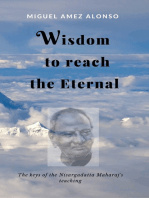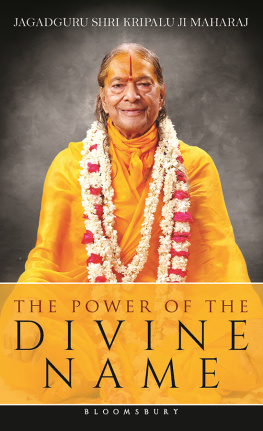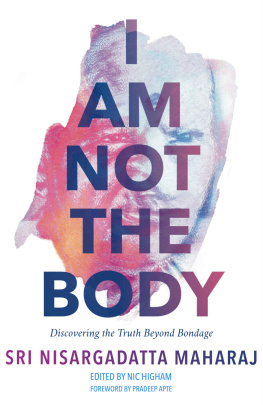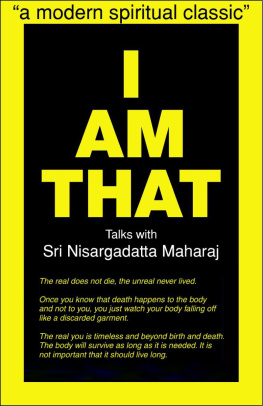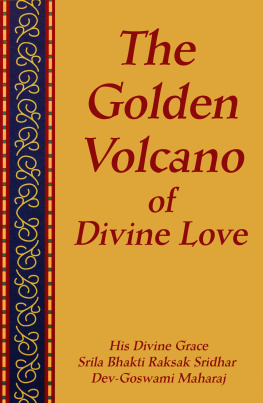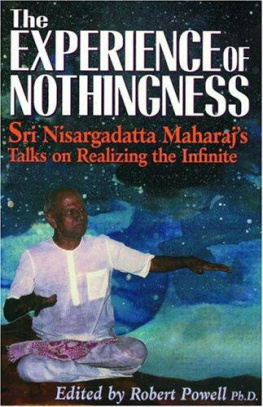M EDITATIONS WITH
S RI N ISARGADATTA M AHARAJ

English editing by
Suresh Mehta
From the original Marathi transcription by
Dinkar Kshirsagar


MEDITATIONS WITH
SRI NISARGADATTA MAHARAJ
First published in India in 2013 by
Yogi Impressions Books Pvt. Ltd.
1711, Centre 1, World Trade Centre,
Cuffe Parade, Mumbai 400 005, India.
Website: www.yogiimpressions.com
First Edition, June 2014
Copyright 2014 by Suresh N. Mehta
All rights reserved. This book may not be reproduced in whole or in part, or transmitted in any form, without written permission from the publisher, except by a reviewer who may quote brief passages in a review; nor may any part of this book be reproduced, stored in a retrieval system, or transmitted in any form or by any means electronic, mechanical, photocopying, recording, or other, without written permission from the publisher.
ISBN 978-93-82742-19-7
Printed at: Uchitha Graphic Printers Pvt. Ltd., Mumbai
CONTENTS
EDITORS NOTE
The material presented here is based upon notes taken by Shri Dinkar Kshirsagar while attending the daily gatherings at the residence of Sri Nisargadatta Maharaj. This was done during the period 1977-79, before Maharaj passed away in 1981.
Maharaj used to conduct morning and afternoon talks, mostly in a question-answer form, with the translator sitting next to him. A small group would also join him in meditation at 6:30 in the morning. Additionally, there was a small gathering later in the evening with the conversation being conducted in Marathi. Shri Dinkar usually attended the gatherings on Thursday and Sunday in the evening, as well as on holidays. Marathi being his mother tongue, it was easier for him to directly follow Maharajs words. He wrote down the poignant Marathi sentences verbatim. As a result, we are fortunate to have a direct and accurate record.
The daily notes are titled Nirupanas. The word means investigating, defining, searching, etc. Maharaj says: To tell you about your true nature as to what it is and how it is, is the meaning of the word Nirupana.
Towards the end of his life, Maharaj preferred to emphasize on the core teaching and not dwell on peripheral topics. He used to say that what was being discussed at that time was different from the earlier dialogs documented in I Am That.
These notes were looked at by Maharaj and he encouraged distribution of the same. The sentences are mostly left as spoken, without rearrangement.
I consider the Nirupanas as passages for meditation. That is their purpose and that is where they lead. They may seem to be repetitive, yet there is a different nuance to them almost every time you read them. Consequently, this is not a book one would read perhaps in one sitting. One should rather read a passage at random and meditate on the same. It will tear away all your internal and external covers and leave your innermost core bare, with no support and ultimately no concepts, method or system to cling onto. At its foundation, of course, are the non-dual teachings of Vedanta or similar schools of thought.
Its uniqueness is that here it comes to us from an enlightened masters direct experience expressed spontaneously.
We owe the first attempted translation of these notes to Mrs. Damayantie Doongaji Ph.D., one of the senior disciples. She forwarded hand-written texts to her friend Jean Dunn in the mid-1990s. Jean had already published several books on the teachings by this time. She in turn asked me to take on the task of editing. Subsequently, Shri Dinkar revised the first translation and I re-edited the same through several iterations. I eventually verified it against the Marathi notes one sentence at a time. My small regret is that it has taken a long time to bring this effort to fruition.
It is difficult to translate the original words (Sanskrit as well as colloquial Marathi) into English, as exact equivalents do not exist. This being the case, readers who are familiar with them will be able to interpret the equivalents with the right contextual meaning. There are plenty of precedents to this, of course. Then again, what we have here is inexpressible in words, as such. It is presented in known languages with their fundamental limitations. Sometimes, they are pointed out or explicit; sometimes they are implied.
Also, many a time the same words are used to express a different meaning or interpretation. For example, the word consciousness has been used as prana the life force; as awareness; as knowingness; as self; or, as the ultimate root of manifestation that is Brahman. Hence, the context is very important.
I had the good fortune of attending Maharajs talks in the summer and monsoon of 1979, when I lived in Mumbai.
During a visit to Sri Ramanasramam in Tiruvannamalai, a year earlier, someone had given me Maharajs address. Later, when I read an article by Jean Dunn in The Mountain Path the Asramams magazine, I decided to go visit him.
It is impossible to second-guess how, why, and when things happen.
As I reflect back on those visits, the most poignant feeling that arises is a sense of grace. He did not call himself a Guru. And yet, I believe, if you were initiated you somehow experienced it. It seemed that he did not form an image of you as such. He rarely called people by their names. It was as if we had no names. His mind did not seem to record the meetings.
Somehow, the questions one had and were never verbalized were answered during the flow of the session. It was as if divinity was playing its role but there was no player, so to speak. Once in a while, he would look at you and ask you what the question was. His primary advice was to regularly meditate on the sense I am.
After a few months, when I told him I was going back to USA, his only comment was: You have to pass the time somehow. When I asked if I would see him again, he gave a look that suggested he did not like such questions. Then he said I would see him. It so happened that I had to make a quick trip back to India less than a year-and-a-half later and he graced me with a meeting. Eight months later, he passed away.
A few quotations from the Nirupanas have been presented in an earlier pictorial book The Wisdom Teachings of Nisargadatta Maharaj, published by Inner Directions in 2003.
I am grateful to Shri Dinkar for allowing me to edit his painstaking notes and publish the same. I am also thankful to late Damayantie Doongaji for initiating this, and my friends and mentors late Jean Dunn and Saumitra K. Mullarpattan for guidance and encouragement. The latter had asked me to contact Gautam Sachdeva of Yogi Impressions for publishing the same.
I am thankful to him for making it happen. I also must thank him and his team for a careful, thorough and extensive review of the text for syntax, punctuation and consistency.
Gautams firm has earlier published three books on Maharaj, and he has himself been deeply inspired by the Teaching. He has captured the essence of this book in a short video that can be viewed on YouTube: http://youtu.be/NaIvHDpbFqM or http://tinyurl.com/MaharajBook1
Suresh N. Mehta
Pleasanton, CA
June 23, 2014
INTRODUCTION
The earliest Indian scriptures, the Vedas, are some of the oldest texts in the history of the world, mostly composed during the Bronze Age. Vedas primarily dealt with the material and non-material aspects of life. As the sages turned their attention inwards to study consciousness, the revelations that they received helped them compose the Upanishads. They are a record of their insights. The foundation of Indian spiritual thought can, largely, be traced to these compositions.
Next page

